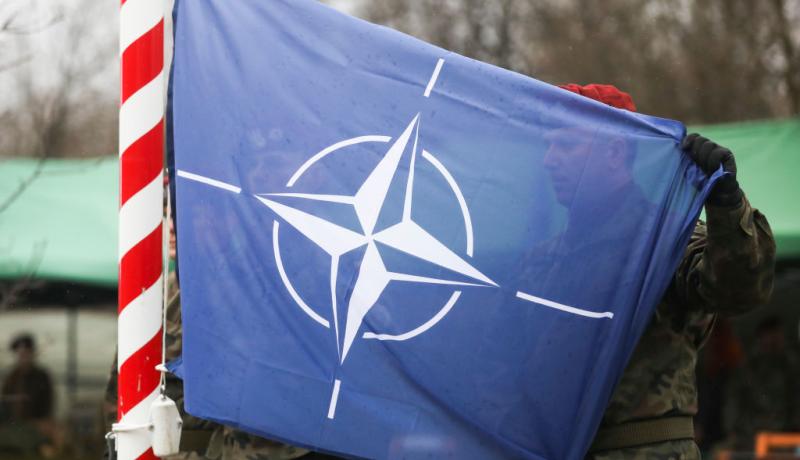
Under NATO’s ‘enhanced forward presence’ programme, small additional contingents from other NATO allies join the host nation’s troops in Poland and the Baltic states to bolster deterrence against any further Russian military adventurism.
These contingents have inevitably become the targets for malign Russian information activities. But so have their communities and families at home.
In the Russian view of information warfare, there is no front line and rear areas, and no non-combatants. According to Russia’s Chief of General Staff General Valeriy Gerasimov, a key feature of modern warfare in the information domain is ‘simultaneous effects to the entire depth of enemy territory’.
Recent incidents in the Netherlands confirm that adversaries have collected information on the families and homes of individuals deployed in the Baltic states for the purpose of delivering highly personalized disinformation or intimidation.
A NATO study on Russian information warfare published in 2016 concluded that ‘it is not just NATO servicemen that will be the targets; but their families, their communities, their societies and their homelands, no matter how safely far away from Russia they may presently consider themselves to be’. But in this case, as in others, there has been no official comment from national or NATO authorities on the extent of the hostile Russian campaign.
The calls to the families of Dutch F-16 pilots are reported to have started after pilots themselves phoned home from the Baltic states using their own mobile phones. Detailed guidance on use of social media and avoiding presenting vulnerabilities through indiscreet posting should be the norm for NATO service personnel as well as their immediate families.
But in addition, even bringing smartphones and other connected devices within reach of Russian interception tools invites hostile intervention. As a result, troops from several nations are banned from taking their own phones on ‘enhanced forward presence’ deployments at all. Those that do report a range of unpleasant consequences indicating overt Russian interference with the content on their phones. More covert attacks on their devices, meanwhile, may go unnoticed.
Russian practice
Again, this is entirely expected: specific Russian systems designed for intercepting, jamming or spoofing civilian mobile phone communications have been in widespread use in Ukraine and Syria, as well as across the borders of the Baltic states.
And Russia does use the information gathered. Attempts to demoralize Ukrainian frontline troops via their phones have included personalized references to their families and children. Campaigns have been observed targeting NATO military personnel directly through LinkedIn, as well as targeting military spouses through online harassment, intimidation, and targeted cyber attacks.
The implication has been plain for some time: that not only service personnel deployed in countries neighbouring Russia, but also their links to their home countries should be considered targets.
NATO forces should by now be training and exercising with the assumption that they will be under not only electronic and cyberattack, but also individual and personalized information attack, including exploitation of personal data harvested from any connected device brought into an operational area.
The very personal impact of hostile Russian interest is illustrated by incidents like unsubstantiated allegations of child rape in Russian-backed media against specific named US Army officers visiting Ukraine. The potential effect of interventions like this not only on military units, but also on families and communities at home is immediate and obvious.
The effect could be most pronounced when targeting aircrew, as with the case in the Netherlands. For all the advanced capabilities of NATO’s combat aircraft, the pilots remain human, and in common with other military personnel, susceptible to human vulnerabilities.
The relatively tiny numbers of trained fast jet pilots in the smaller NATO nations must make them a particularly high value target for interference by adversary intelligence services. This need not even be targeting them for espionage in the traditional style; anything that prevents them from doing their job effectively at a critical moment, be it interventions against themselves or their homes or families, would represent a high return on investment for the adversary.
In addition, Russia has practised the capability to message targeted individuals on a mass scale, with information that appears to them to be coming from a trusted source, whether by SMS, social media posting or email.
When this capability first became apparent, the concern was that the potential to sow confusion could be a critical disabling factor for front-line states in the crucial and decisive first few hours that might decide a conflict with Russia. The countries most at risk have taken steps to mitigate this vulnerability, but this depends in part on having not only armed forces but also a civil population that is well informed as to the potential threat.
No comment
Nevertheless, the Netherlands’ military intelligence service has declined to comment on media reports of harassment of pilots’ families. This fits the pattern of silence on Russian activity from both the Alliance and its individual member states.
The result is that information on instances of Russian intimidation against service personnel and their families remains fragmentary and anecdotal. The situation is similar with incidents at sea and in the air, where the limited information publicly available on Russian activities leads to a distorted – and potentially far too benign – picture of what Russia is practising for, and how. As with the incident involving Russian Defence Minister Sergey Shoygu’s aircraft and a Spanish fighter this week, NATO’s reticence allows Moscow to push forward its narrative of innocent victimhood unchallenged.
There is a strong public interest in this information being more widely available, in order better to inform not only those service personnel and families most immediately at risk, but also the general public, in order that they can better gauge the real level of hostility involved in day-to-day interaction with Russia. NATO and national governments may have a clear rationale for remaining silent; but at present that rationale remains unstated.
Keir Giles, Senior Consulting Fellow, Russia and Eurasia Programme.

